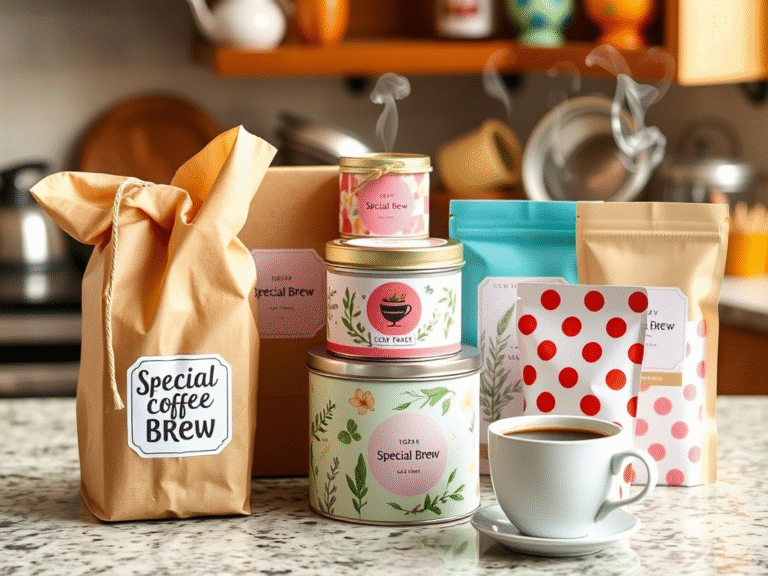How Does Dripshipper Help You Offer Coffee for People With Allergies?
Have you ever taken a sip of your go-to coffee, only to feel a little bloated or itchy after drinking? You’re not alone.
There are a lot of people who love coffee, but suffer from allergies or intolerances to dairy and nut products.
That’s Something Dripshipper Aims to Change. They advocate alternatives like oat, rice, coconut creamer, almond and soy milk to ensure everyone can enjoy their morning cup of joe without concern.
The truth? Some 75 percent of the world’s population can’t digest lactose. So giving up dairy isn’t just a preference — it’s a must for so many.
And it’s not just lactose intolerance; plenty of people have nut and soy allergies as well. So, what’s the solution? Let’s explore how Dripshipper is helping make coffee safe and tasty, and welcoming for all.
Don’t Mix
Coffee is supposed to be soothing, not intimidating. But for millions, drinking coffee is a game of allergy roulette.
Three in four people globally suffer from lactose intolerance. This is why most people can’t even fathom putting regular milk in their coffee without experiencing some kind of digestive discomfort, such as diarrhea, bloating or cramps.
And it doesn’t stop there. Cases of nut allergies are increasing, particularly in children. A drop of almond milk was a big no-no for them.
There are also different issues with soy allergies. Suddenly, picking up a latte seems less like a casual, pacific transaction and more like tiptoeing through a minefield.
So, what do we do? We adapt. And plant-based milks and non-dairy creamers are emerging as heroes.
But not all alternatives are created equal. Some function better than others based on allergens, texture and flavor plentiful in savory and sweet recipes. Let’s break it down.
Nut-Free Sippers
But if you are allergic to nuts and soy, rice milk may be your new best friend. It’s free of both allergens, so it’s a safe option for drinkers who are sensitive.
The downside? It’s thinner than the other options and lacks protein.
I will say, I was dubious at first. It may sound thin, but unenthusiastic? But rice milk tastes neutral and mixes well into coffee.
It doesn’t detract from the rich palate of an espresso or drip brews. And it’s a natural sweet, so sugar won’t be necessary.
However, there’s a catch. Rice milk naturally contains more sugar. If you’re cutting back on carbs or calories, this may not be good news.
But for those who are looking for something that is less heavy, and less allergenic, rice milk fits the bill.
Creamy Comfort Without Compromise
Oat milk is having a moment — and you can see why. This creamy alternative delivers on all fronts: it’s free of common allergens, it froths up gorgeously, and it provides health benefits.
I became a devotee of oat milk after my first oat milk latte — it seemed so indulgent and so right.
What makes oat milk different is the presence of beta-glucan, a kind of soluble fiber in oats. Beta-glucans also lower cholesterol, and that’s great news for the heart.
Also, oat milk has more protein than rice milk, which makes it a thicker, creamier beverage.
But here’s the catch: Not all oat milks foam evenly. Barista blends have better consistency if you’re attempting to do art or prepare cappuccino-like drinks.
Everyday brewing tends to be fine with a regular oat milk, but shorter for fancier creations. Either way, it’s a great choice for allergy-conscious fans of coffee Who this is for: Those who wish to start fiddling with recipes, but not get too deep into the rabbit hole of coffee recipes.
Richness Meets Tropical Vibes
Coconut creamer is a godsend for ketogenics and vegans. Imagine a silky, thick texture tinged with a trace of tropical sweetness.
Sounds dreamy, right? That’s where coconut creamer comes in.
As a lover of the bold, I love how coconut creamer brings an exotic element to boring black coffee.
It’s also loaded with good fats, which help make it satisfying for everything-haters who are trying to slash carbs.
But don’t count on perfect foaming every time. Coconut creamer’s thickness from one brand to another is inconsistent, so results are hit or miss.
One word of warning: coconut creamer does taste a little different. If you don’t like coconut, this may not be your jam. But for the intrepid mouth, it’s a charming departure from the norm.
Almond Milk
Almond milk is ubiquitous these days — and for good reason. Its nutty notes pair beautifully with coffee, and it’s lower in fat than dairy. But before you pour that latte into your mug, that almond milk is a nut product.
Almond milk is not an option for those with nut allergies. Almost infinitesimal amounts can provoke severe reactions.
What’s more, regular almond milk has a habit of splitting in the heat unless you specially pick up barista varieties, which have been created with coffee in mind.
In spite of these negatives, almond milk is still the fan favorite among allergen-free sippers.
Its subtle sweetness also complements, but doesn’t overpower the natural notes of the coffee. Just ensure it’s consistent with your dietary requirements before you commit.
Soy Milk
Soy milk is a classic, and for a lot of people, it’s still the best. Why? “It’s so creamy and frothy — froths better than cow’s milk — and has a high protein content.” And, it’s a good companion to bold coffee blends, tempering bitterness with mellowness.
But soy poses its own set of problems. Soy Soy, like almonds, is an allergen. Those with soy sensitivities will need to stay away.
More than that, some simply don’t like soy milk’s somewhat beanlike aftertaste, though new formulas have come a long way.
As far as I’m concerned, there are no downsides to soy milk. And whether I’m frothing a cappuccino or sipping a plain old Americano, soy has kept me toasty, day in, day out.
That doesn’t mean you shouldn’t consider the pros and cons for your unique situation.
Why Going Dairy-Free Is Non-Negotiable
Let’s talk numbers. Were you aware that a whopping 75% of people all over the globe are unable to digest lactose correctly? That is almost eight out of 10 of people who deal with stomach cramps, bloating or worse after consuming dairy.
For them, giving up the creamer is not fad or luxury, it is necessity.
Coffee without dairy is about more than preventing distress; it’s about inclusion. By providing options, cafes and roasters are making sure that no one is left behind.
From oat milk lattes to coconut cream cold brews, the options abound. And besides: No one likes to be the spectator while everyone else is imbibing.
Customization Through Private Labeling
Now, we’re where it gets good. Dripshipper is more than just selling coffee — they are enabling sellers to produce custom, private-label coffee brands for specific markets.
And imagine the launch of a line of specialty-grade beans, roasted fresh daily, with allergy-friendly packaging.
Customization is key. Sellers also can advertise features like “nut-free” or “vegan-approved” to appeal to niche markets.
When quality meets convenience, it’s remarkable what can happen in a day. This versatility enables entrepreneurs to serve a variety of customer bases, including special dietary needs.
It’s a win-win situation. Customers discover products that fit their needs, and companies differentiate themselves in the crowded marketplace.
And, you’ll feel good knowing you helped someone else safely enjoy coffee.
Breaking Down the Stats
To help you make a decision, here’s a handy summary table of milk substitutes:
| Milk Substitute | Allergy Considerations | Texture & Flavor Notes | Health Benefits |
| Rice Milk | Good for nut and soy allergies | Mild flavor, thin and watery texture | Low protein, high sugar content |
| Oat Milk | Free from common allergens | Sweet, creamy, rich texture | Contains beta-glucans, fiber, protein |
| Coconut Creamer | Vegan, lactose-free | Creamy, dense, exotic taste; foaming varies | High fat content |
| Almond Milk | Nut allergen | Nutty flavor, may separate without barista blend | Low calorie |
| Soy Milk | Soy allergen | Creamy, good for frothing | Protein-rich |
This table provides you with a brief overview of the pros and cons of each option. Use it to help you plan your next coffee experiment.
Final Thoughts
But inclusive coffee isn’t just a matter of catering to trends, it’s about making space for everyone to participate in the ritual of a warm cup.
Between oat, rice and coconut creamers, no one loses out with Dripshipper.
So go ahead, sip confidently. Your perfect brew awaits.

Hi! I’m Zoey — a foodie, coffee addict, and home chef based in Portland. I’m all about making cooking fun, easy, and a little bit extra. Whether it’s quick weeknight recipes, cozy drinks, or baking experiments, I love sharing what’s happening in my kitchen (even the fails). When I’m not cooking, I’m probably cafe-hopping or testing out new cocktail ideas.







